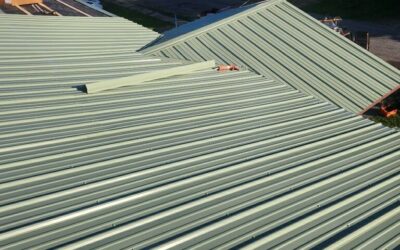What Are Tar and Gravel Roofs, and Are They a Good Option?
When choosing a roofing system, homeowners and business owners alike seek durability, cost-effectiveness, and longevity. One traditional roofing option that has been around for decades is the tar and gravel roof. But what exactly is a tar and gravel roof, and is it the right choice for your property? This blog explores the features, benefits, drawbacks, and considerations of tar and gravel roofing to help you make an informed decision.
What Is a Tar and Gravel Roof?
A tar and gravel roof, also known as a built-up roof (BUR), is a type of flat or low-slope roofing system consisting of multiple layers of waterproof materials. These layers typically include:
- Bitumen (tar or asphalt): Provides waterproofing and adhesive properties.
- Reinforcing fabrics (felts or fiberglass mats): Enhances durability and strength.
- Gravel or aggregate: Serves as a protective top layer to shield the roof from UV rays, weathering, and physical damage.
The roof is built up by alternating layers of tar and fabric, which are then topped with a layer of gravel to ensure longevity and weather resistance.
Benefits of Tar and Gravel Roofs
Tar and gravel roofs offer several advantages that make them an attractive choice for certain properties.
1. Durability
Built-up roofing systems are known for their strength and resilience. The multiple layers provide excellent protection against harsh weather conditions, including rain, snow, and UV exposure. With proper maintenance, a tar and gravel roof can last 20 to 30 years.
2. Waterproofing
The layered construction of tar and gravel roofs creates a seamless waterproof barrier, reducing the risk of leaks. The gravel layer also helps distribute water efficiently, preventing ponding on flat surfaces.
3. Energy Efficiency
The gravel layer reflects sunlight, reducing heat absorption and keeping indoor spaces cooler. This can lower energy costs in warmer climates by reducing the need for air conditioning.
4. Cost-Effectiveness
Compared to other flat roofing options, tar and gravel roofs are relatively affordable. The materials are widely available, and installation costs are often lower than those of more modern roofing systems like TPO or PVC.
5. Impact Resistance
The top layer of gravel provides protection against foot traffic, hail, and debris, making it a durable choice for commercial buildings and residential homes alike.
Drawbacks of Tar and Gravel Roofs
While tar and gravel roofs have many benefits, they also come with some disadvantages that should be considered before installation.
1. Weight
Tar and gravel roofs are heavier than other roofing systems, which means that the building structure must be strong enough to support the added weight. Reinforcements may be needed, increasing installation costs.
2. Installation Complexity
Installing a tar and gravel roof requires professional expertise. The process involves heating and applying layers of hot bitumen, which can be hazardous if not done correctly. Improper installation can lead to premature roof failure.
3. Maintenance Requirements
Although durable, tar and gravel roofs require regular inspections and maintenance to prevent leaks and damage. Over time, the gravel layer may shift, exposing the underlying tar to the elements.
4. Repair Challenges
Detecting leaks in a tar and gravel roof can be difficult, as water can travel between the layers before becoming visible inside the building. Repairs often require removing sections of the roof to find and fix the problem.
5. Limited Aesthetic Appeal
While functional, tar and gravel roofs are not the most visually appealing option. They are mostly used on commercial buildings and flat-roofed homes rather than properties where curb appeal is a primary concern.
Is a Tar and Gravel Roof Right for You?
Deciding whether a tar and gravel roof is a good option depends on several factors:
- Building Structure: Ensure your property can support the weight of the roofing system.
- Climate: Tar and gravel roofs perform well in various climates but may require additional insulation in extremely hot or cold regions.
- Budget: If you need an affordable, long-lasting flat roof, this could be a good choice.
- Maintenance Commitment: Be prepared for routine inspections and occasional repairs.
Conclusion
Tar and gravel roofs remain a reliable and cost-effective roofing solution, especially for flat or low-slope buildings. While they offer durability, waterproofing, and energy efficiency, they also require proper maintenance and professional installation. If you’re considering a tar and gravel roof, consult with a professional roofing contractor like S&K Construction and Remodeling LLC to determine if it’s the best fit for your property.
 (440) 307-2060
(440) 307-2060

